TV Station KHB
Tsunami Disaster Heartache and Hope Through the Viewfinder – 49 days of Life and Death –
DC371103![]()
津波を撮ったカメラマン [KHB]
![]()
![]()
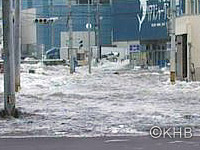
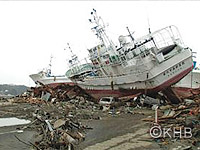
|Length : 24min. |Year : 2011 |
A local news cameraman shoots the huge tsunami engulfing Kesennuma, a city in Miyagi Prefecture and one of the major fishing ports of the Tohoku region. He seeks footing near the port with camera in hand and finger pressed to shutter as he backs his way up a flight of stairs to higher ground. The viewfinder, framed at the residents' eye level, fills with the terrifying sight of gushing black water. As the tsunami starts to recede, the cameraman hears calls for help from all over town. After a moment's hesitation, he sets his camera down and walks towards the voices.
The program follows the work of the news cameraman living in the fishing port devastated by the monstrous wave and, through his camera, presents the fury of the tsunami and the daily lives of the people in the afflicted area.
The Sake that Bonds “Unite311” A Sake of Gratitude
DC282284![]()
絆の一献~恩返しの酒「Unite311」 [KHB]
![]()
![]()

|Length : 47min |Year : 2022 |
There is a sake brewery with a long history that was close to being forced to shut down after its facilities were destroyed in the Great Tohoku Earthquake of March 2011. At that time, brewery workers from across Japan rushed in to help them out.
This documentary follows the owner and workers of the brewery that was reborn, as they attempted to create a “special sake” that would express their gratitude to those who lent them a helping hand during that period, 10 years ago. Since that disaster, they have worked to broaden the base of the Japanese sake industry, hiring the nation’s youngest female Head Brewer, as well as a foreign Assistant Head Brewer. To mark this 10th anniversary of the disastrous earthquake, our aim is to relay to you the passion for SAKE of this brewery owner and his workers, as they move forward with heartfelt gratitude for all the support they received at the time, as well as to give you a glimpse of the progress the Tohoku region has made in its recovery.
Bonds Born Through Football – A year with 2 Coaches
DC281149![]()
ボールが結んだ心の絆 ~熱血サッカーコーチの1年に密着 [KHB]
![]()
![]()
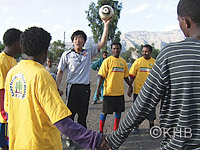
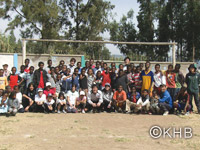
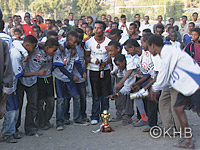
|Length : 30min. |Year : 2011 |
Vegalta Sendai makes its home in Sendai, a city known for its greenery. In the subdivisions of this club, there are 2 young coaches who coach children in hopes of cultivating them into professional football players. ( These 2 coaches are Coach Kazunori Inoue and Coach Naoto Fukuda of the Sendai Vegalta Player Development Division. ) In January of 2011, these 2 coaches took a trip to coach football to children in Ethiopia. With a population of 80 million, football is very popular in Ethiopia. When you ask the children what they want to be when they grow up, they answer almost in unison that they want to be pro-football players. The football field of the elementary school the coaches visit first is laden with huge rocks making it a dangerous environment to play in. Their footballs are made from old clothes being stitched together so when the children get the chance to play with a real football, they all run after it excitedly. This is the only way they know how to play football as they imitate what they see on TV. So it was big news when they heard football coaches would be coming from Japan as they do not yet know how an actual football practice is carried out. Their bright eyes fixed on the coaches fill with expectations and hopes. The coaches struggle at communicating to the children drills that can be done with a few footballs to many people like dribbling and passing. At first the confusion the children felt was evident. However, the children gradually began to feed off the coaches' enthusiasm. The joy of playing football with your friends turned the expressions on the children's faces to smiles. The 2 coaches feel the bonds created from football as they head for home. However, soon after arriving in Japan, they are met by a great earthquake and a giant tsunami in their home towns. The Japanese children whose footballs and football shoes were washed away by the tsunami hope for the day they can play football again with all of their friends. The coaches become busy bringing aid to the disaster-stricken areas in hopes of giving the children a chance to play football as soon as possible. In the midst of all this, they receive a message from the children of Ethiopia filled with concern for the disaster and gratitude for what the coaches taught them.
Preserving the Future~The Challenges of Restoring a National Treasure~
DC271636![]()
よみがえる国宝 瑞厳寺~平成の大修理 100年先に繋ぐ匠の技~ [KHB]
![]()
![]()
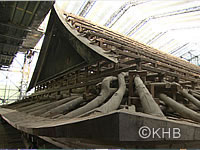
|Length : 50min |Year : 2016 |
Majestic Zuigan-ji Temple in the northeast Japan is a national cultural treasure. Completed 400 years ago by the feudal lord of the region, Date Masamune, it’s famous as a lavish and glorious example of the culture of the Azuchi-Momoyama period. With ground subsidence now causing its pillars to tilt, Zuigan-ji has been undergoing comprehensive repairs and restorations since 2009, called "the great Heisei restoration." An essential consideration in the repair of Japanese cultural properties is that old and weathered parts must not be replaced and existing original materials must be reused to the greatest possible extent. The restoration's greatest hurdle was to reinforce the structure against earthquakes.
Murone Shrine Grand Festival
DC271032![]()
守り続けて1300年 みちのくの荒祭り [KHB]
![]()
![]()
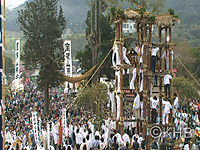
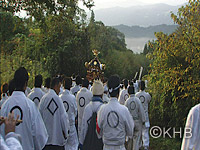
|Length : 30min. |Year : 2010 |
Murone Shrine was built in Mutsu Province (now Ichinoseki city in Iwate prefecture) when they re-enshrined a god, Kumano-no-kami, of the Kii Province during the Nara period, to pray for their success in conquering Ezo, or present day Hokkaido. This program captures the festival which is held to welcome the god. People who run the festival are called "Jin-yaku," and their role is passed down through the generations of families who can trace their lineage to the people who moved from the Province of Kii 1300 years ago. The highlight of this 3-day festival is the "Matsuriba event," held in the early morning on the third day. In complete darkness, two mikoshi, or portable shrines, are carried out and raced down the steep slope of a mountain. The race continues until the portable shrines are elevated and settled in their temporary location at the foot of the mountain. This program introduces the entire festival, while capturing the challenges of the people who face having to pass down these rituals to the next generation.














